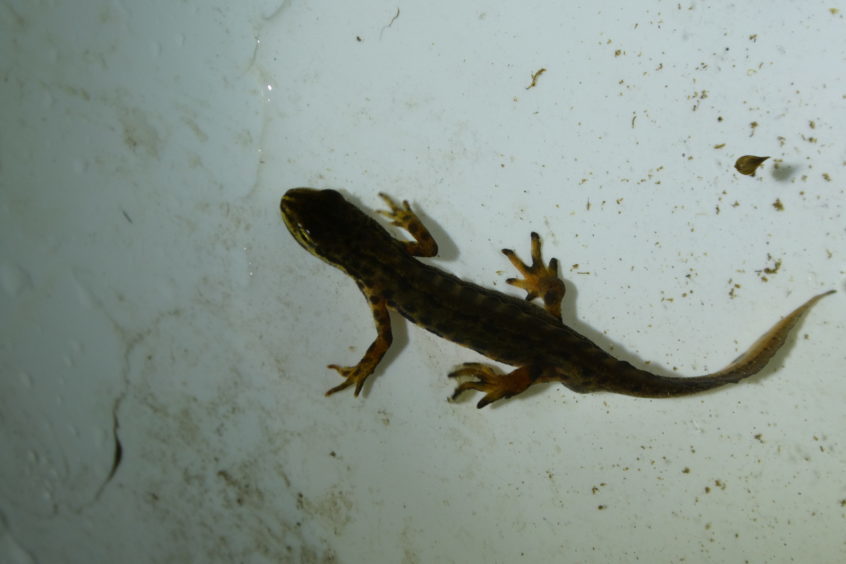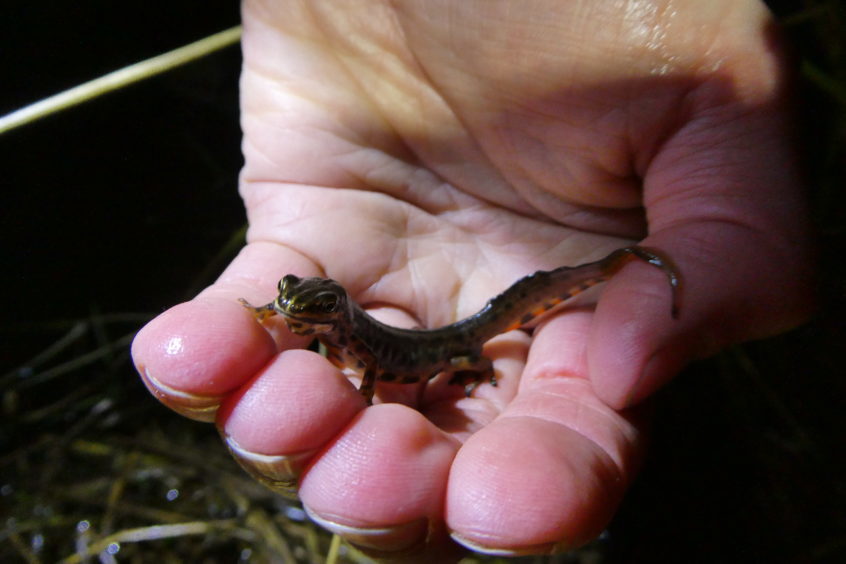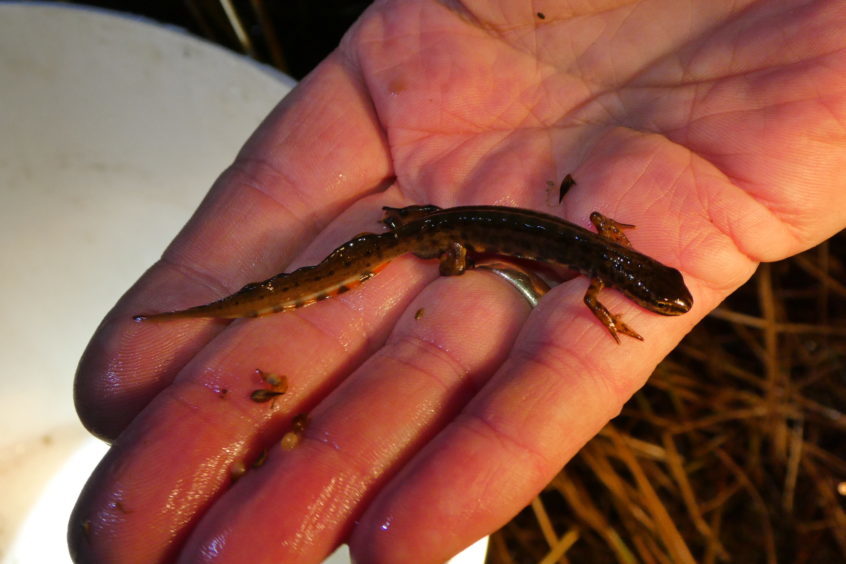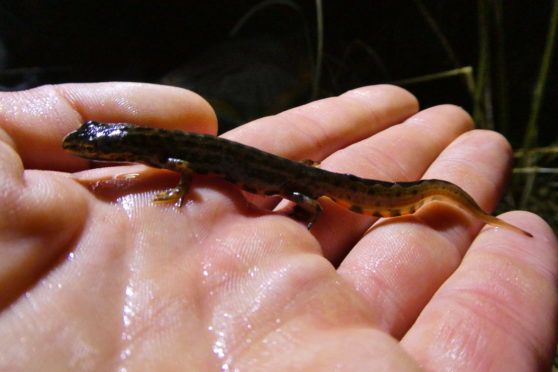An “incredible discovery” of smooth newts has left wildlife experts in Angus gobsmacked and could spark a detailed study of the rare amphibian.
A new double-figure count for the species has been made in Angus, only the second verified occurrence of the protected breed in the county.

The discovery was made during an amphibian survey at Loch of Kinnordy, near Kirriemuir, a site managed by the RSPB.
The Kinnordy find now poses a raft of unanswered questions and may become the subject of studies into the extent of their local range.
Anna Jemmett and Vicky Turnbull of RSPB were accompanied by Trevor and Abigail Rose of Friends of Angus Herpetofauna and Yon Halotel, a student intern with SWT for the night-time search, and were amazed to find nine males and one female smooth newt amongst a fen of the loch.
“This is an incredible discovery,” said Mr Rose.

“Smooth newts are very scarce in the north-east of Scotland and we had virtually written off any chance of finding new records.
“There is only one other known site where smooth newts exist in Angus (Barry Buddon), and we are certain they originated from England when ponds were dug around 20 years ago then stocked with water plants from the south.
The origin of the Kinnordy population is unknown but there is every reason to believe this could be a relict population that has been missed by biological recording up to now”.
Anna Jemmett, one of the RSPB wardens responsible for the site said “We are very pleased to add this fantastic creature to our species list for Loch of Kinnordy.
“It’s a great addition to an already wide range of species that use the site alongside the incredible abundance of bird life”.
“Wardens initially got excited about the presence of newts at the loch when efts (newts in the larval form) were found during their annual “bioblitz”.
However, such young newts can only be identified to genus, not to species level, so their true identity remained unknown until now.
“We knew there were newts here but presumed they would be Palmate newts, which are widespread across Angus and the rest of Scotland”, Mr Rose said.
“Finding adults had proven to be quite difficult at the site due to the tricky surveying conditions presented by the boggy, highly vegetated habitat.

“When we finally located them, catching one or two was equally tricky, but when we did manage to capture one we were absolutely gob-smacked to find they were Smooth newts, much less common in Scotland than the closely related Palmate variety”.
Smooth newts are very common south of the border but tend not to be found in the north of the UK due to the acidic water quality associated with peaty soils and pine woodland.
Palmate newts are more tolerant of acidic conditions and thrive in these environments, but Smooth newts prefer neutral pH or slightly alkaline.
Anna Jemmett said “Interestingly, Loch of Kinnordy is alkaline. The fact that we have now proven the presence of Smooth newts shows how nature can back-up the science.”









